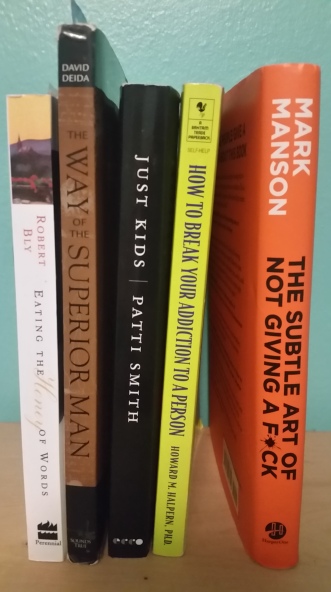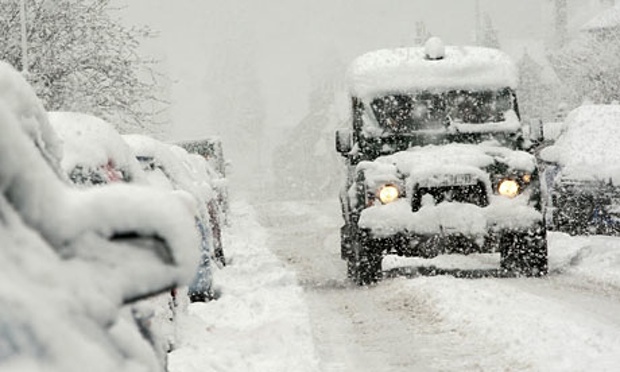Poet, author, and thought-leader Robert Bly turned 90 last year on Friday, December 23rd. His name will be forever associated with the mythopoetic men’s movement, a loosely-knit group of men, scattered across the country, that gathered during the late 1980s and early 1990s to sing, drum, dance, and reconnect with their bodies. Bly’s book “Iron John” was their inspiration. In that book, he holds that modernization has caused an identity crisis in the modern American male, a crisis that can only be solved by reconnecting with and giving voice to grief; by being initiated into adulthood by older men; and by reconnecting with the earth. The movement gained huge popularity after Bill Moyers interviewed Bly in 1990 in “A Gathering of Men” on PBS. Although the movement was widely criticized, and at times ridiculed, it was the first time, for many men, that we connected with our emotions — the first time they gave themselves permission to feel. Public attention on the mythopoetic men’s movement lasted about five years, but the weekend events and the relationships forged there changed the lives of many men forever and inspired some men’s groups that still exist, such as The Mankind Project.
Bly’s legacy is getting renewed interest and attention since the release last year of “A Thousand Years of Joy”, a film about his life and work. It’s an intimate portrait of a multi-faceted man. Bly’s influence on American culture goes way beyond the mythopoetic men’s movement; his contributions are vast and wide-ranging. Here are some aspects of his life that may surprise you:
Bly made it okay to be introverted. Both through the example of his life, and through his writing, Robert Bly represents the cultivation of self-knowledge through solitude. During his years living in New York City in the early 1950s, he lived in a rented room and met few other poets. Years later, as a successful author and a National Book Award winner, when young students asked for advice on what it takes to become a poet, he’d tell them to live alone for two years and not talk to anyone, because without an experience of solitude, a poet’s words won’t carry the authority of self-knowledge.
But his thirst for solitude and love for the inner life was always balanced by a passion for social justice and a moral outrage against human cruelty. “American Writers Against the Vietnam War” was an organization he founded, with fellow poet David Ray, to provide a vehicle for American intellectuals to voice their opposition to that war. Bly became a frequent sight on college campuses and at anti-war rallies, demonstrations, and teach-ins, bringing his anger over the war to life with poems that had a personal, intimate quality to them. Unlike other political writers who simply gushed their anger onto the page, Bly was introspective and fearless, and wrote poems that were carefully crafted, as in these lines from “Counting Small-Boned Bodies”:
If we could only make the bodies smaller
Maybe we could get
A whole year’s kill in front of us on a desk!
As a sensitive intellectual, Bly provides a model for younger men in this country who may be seeking an alternative to the stereotyped forms of masculinity seen in the media (and taken to an extreme by our president-elect). Their experience is of a man who is sensitive to feeling and expressive of his emotions but still grounded. This is also a man who also sees women in a very different way than in ways many of us were brought up to do.
How much I need
A woman’s soul, felt
In my own knees,
Shoulders and hands.
I was born sad!
(from “Love Poem in Twos and Threes”)
Spending a few hours reading poems like this brings us into the presence of a man who can remain open-hearted and grounded while still remaining true to who he is as a masculine man.
Bly helped us see the world through poetry. Robert Bly was one of the first to introduce American readers to certain poets writing in other languages whose work was mostly unknown outside the cultural traditions from which they came. Through his literary journal The Fifties Press (its name changed with the passing decades), he provided original translations into English of many poets whose names are now familiar to many of us, and whose work is now taught at many high schools and colleges around the country: Rainer Maria Rilke, Pablo Neruda, Antonio Machado, Rumi, Kabir, and Mira Bai – to name just a few. Other writers and poets continue to produce translations of these and other authors from many languages.
Bly was a keen observer of societal shifts. Bly became increasingly disturbed by the ascendancy of youth-centric culture and the social and economic forces that encourage everyone to think of each other as sibling rivals. A world without mentors or people to look up to is a world where people begin the path to adulthood too soon, — but emotional growth stops at adolescence. Previous generations were marked by compromise and sacrifice; people only got about half of what they wanted, but they grew up all the way. In the sibling society, people feel entitled to everything they want, but grow up only halfway.
Since “The Sibling Society” was written the problem’s only gotten worse. Social media is a place where experts’ and dabblers’ opinions both carry equal weight, and where people post news and photos of their achievements online, to the envy of others. Where is the role of mentors and teachers in a world where everyone has equal access to the public’s attention, and where everyone feels entitled to be rich, famous, and successful? Where are the pictures of people’s failures and getting up again, or of making personal sacrifices?
Bly started the Great Mother Conference. Before Robert Bly wrote “Iron John”, and long before he started his men’s workshops, one of his main interests was in the divine feminine. The Conference on the Great Mother was a gathering he started in 1975, inspired by the work of psychologists Carl Jung and Erich Neumann, with the purpose of reclaiming aspects of the divine feminine by seeking evidence of her in other cultures around the world, through what became known as the “mythopoetic imagination” – a revisioning of modern cultural narrative through story and song. This conference still takes place every year near Portland, Maine, and has been renamed “The Great Mother and New Father Conference”. It’s hosted teachers like psychologists Joseph Campbell and James Hillman, as well as Rumi translator Coleman Barks and others.
In addition to these direct influences, Robert Bly’s work has influenced the work of many people in the helping professions – most notably psychotherapists Robert Moore, Douglas Gillette, and John Herald Lee. All publicly acknowledge and give credit to Bly for his inspiration to work with men. His collaboration with Jungian analyst Marion Woodman (“The Ravaged Bridegroom”) has helped thousands of women also, and helped to popularize the writings of Clarissa Pinkola Estes (“Women Who Run With the Wolves”) and others who gave a voice for women’s stories and healing.
Although he never has, and probably never will (because of his politics), serve as our poet laureate, Americans owe a great debt to the life and work of Robert Bly. He introduced us to new ways of being male; he gifted us with translations of poets from other cultures; and his cultural criticisms are every bit as true today as when they were written. We wish him the best on his 90th birthday.
##

 What insights can come to us when harsh weather has sealed the exits, reduced available distractions, and encouraged us to go deep? The first and most obvious is a reminder of our vulnerability. In a time when lights are always on, food is readily available, and travel is so easy, it helps to remember and be grateful for that complex web of infrastructure on which our lives in the 21st century depend. A mere 20″ of snow can shut down a major metropolitan area for 24 hours. What other conditions beyond our control have such a dramatic effect on our lives?
What insights can come to us when harsh weather has sealed the exits, reduced available distractions, and encouraged us to go deep? The first and most obvious is a reminder of our vulnerability. In a time when lights are always on, food is readily available, and travel is so easy, it helps to remember and be grateful for that complex web of infrastructure on which our lives in the 21st century depend. A mere 20″ of snow can shut down a major metropolitan area for 24 hours. What other conditions beyond our control have such a dramatic effect on our lives?
You must be logged in to post a comment.